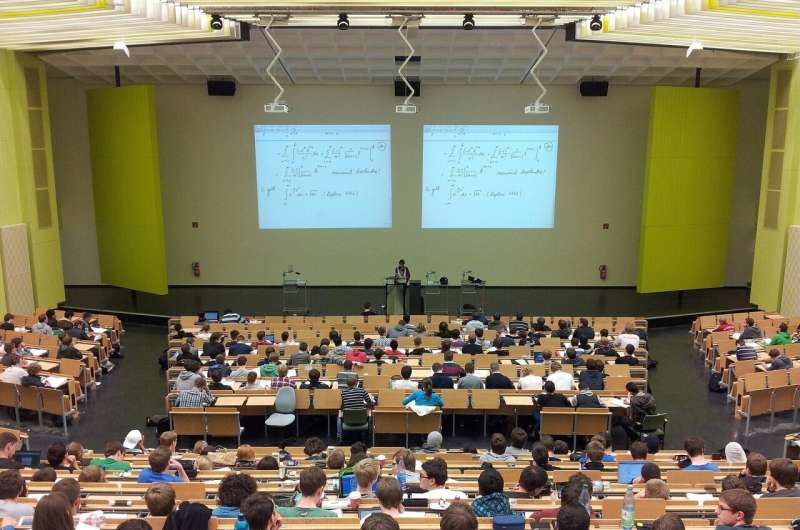This article has been reviewed according to Science X's editorial process and policies. Editors have highlighted the following attributes while ensuring the content's credibility:
fact-checked
peer-reviewed publication
trusted source
proofread
Study finds COVID vaccine mandates significantly reduce infection rates on college campuses

New research from The Ohio State University College of Medicine finds COVID-19 vaccine mandates are highly effective at reducing the spread of the virus and increasing immunity in a university setting.
The study, published in the journal PLOS Pathogens, found net viral loads among all community members declined after university vaccine requirements went into effect. Masking, isolation and antibodies from getting sick weren't enough to decrease infection rates.
"Before the vaccine was required, the virus was becoming more concentrated in saliva and easier to spread to vulnerable populations like young children and older adults," said Richard Robinson, Ph.D., principal investigator and associate professor in the Department of Microbial Infection and Immunity.
"Once the requirements were in place, we saw on average a 100% decrease in virus in saliva and up to 12,000% increase in antibody levels to block its spread."
Researchers looked at data generated as part of The Ohio State University's COVID monitoring program, which occurred from August 2020 to June 2022. As part of this program, saliva specimens were collected on a weekly basis from asymptomatic students, staff and faculty. More than 850,000 diagnostic COVID tests were performed.
"The COVID monitoring program focused on asymptomatic adults for several reasons," Robinson said. "Asymptomatic infections are more common in young adults, asymptomatic individuals would still spread the virus and the isolation of symptomatic individuals alone wasn't enough to flatten the curve of COVID infections."
Six Ohio State campuses in Columbus, Newark, Mansfield, Lima, Marion and Wooster participated in the monitoring program. The data found COVID positivity in asymptomatic adults occurred in waves which mirrored the infection rates in the regions surrounding the university campuses and were driven by newly emerging variants such as delta and omicron.
"At the time, there was growing concern that college students were creating new waves and peaks in infection when they would return to communities after distance learning and breaks in their education, but that wasn't the case," Robinson said. "The rates of infection were already increasing when classes resumed, even in rural areas."
Additionally, researchers explored the causes of breakthrough infections in vaccinated people. They compared the antibody responses of uninfected vaccinated people with those of infected vaccinated people.
The study found breakthrough infections in vaccinated people were not due to an absence of antibodies but depend on antibody levels at the time of exposure, the neutralizing ability of the antibodies and the amount of virus to which the person is exposed.
Future research will focus on the conditions that make people more resistant to COVID infection.
More information: Marlena R. Merling et al, The emergence of SARS-CoV-2 lineages and associated saliva antibody responses among asymptomatic individuals in a large university community, PLOS Pathogens (2023). DOI: 10.1371/journal.ppat.1011596





















